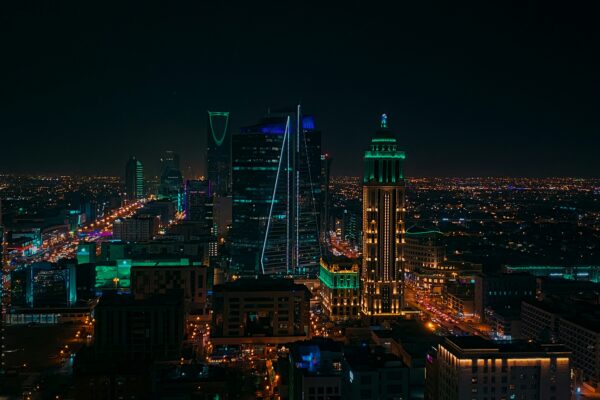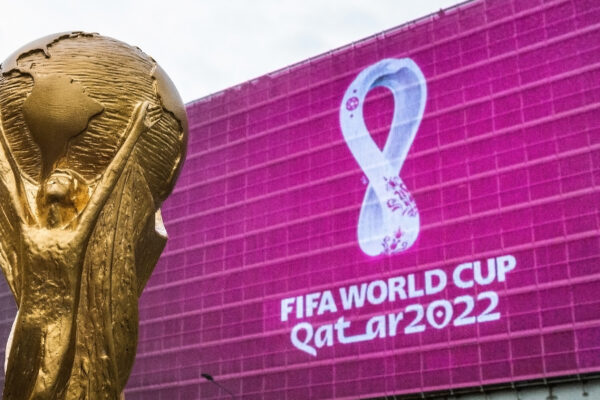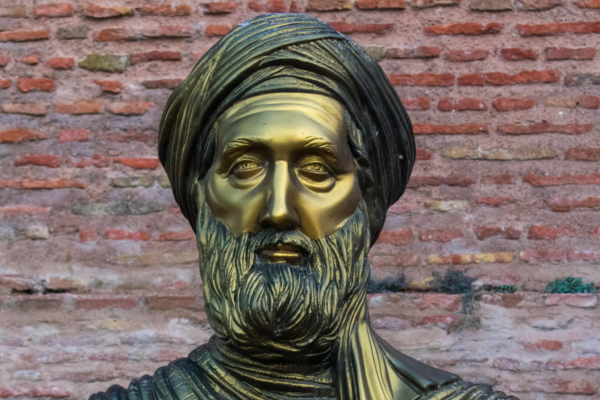Arab Gulf kingdoms have a penchant for adorning themselves with Western brands and institutions. But unlike its regional neighbors Dubai or Abu Dhabi, Qatar’s internationalist reach goes much further than that of its multifold global investments: in recent years it has also emerged as a facilitator of conflict resolution in a region not shy of geopolitical and domestic strife.
Arab Gulf kingdoms have a penchant for adorning themselves with Western brands and institutions. But unlike its regional neighbors Dubai or Abu Dhabi, Qatar’s internationalist reach goes much further than that of its multifold global investments: in recent years it has also emerged as a facilitator of conflict resolution in a region not shy of geopolitical and domestic strife.
What does France’s top football club Paris Saint Germain, the British luxury department store Harrods, Germany’s largest car-maker Volkswagen, and the Bank of America all have in common? They are all fully or partly owned by the tiny Persian Gulf State of Qatar.
With a population of approximately 2.7 million, the country is frequently associated with multiple superlatives: boasting the highest per capita income in the world; being designated by the UN as a country of very high human development; possessing the third-largest natural gas reserves in the world.
The latter is also the country’s central wealth-generating motor, allowing Qatar’s national sovereign wealth fund, the Qatar Investment Authority which holds assets worth $115 bn, to acquire or hold stakes in myriads of companies in a truly diverse foreign investment portfolio administered by its sub-entity, Qatar Holding.
This portfolio goes on to include global household names like Deutsche Bank (6.1 % stake) and Miramax Film Studios (owned by Qatari beIN Media Group), Russia’s oil giant Rosneft (19 % stake) and luxury fashion brand Valentino.
The UK and London, in particular, have become a hotbed of Qatari investment and aquisitioning: from Sainsbury’s (17.4 %, making the Qatari-backed investment group Three Delta the largest shareholder) to Barclay’s Bank (its largest shareholder also being Qatar), London’s Heathrow Airport (20%) to British Airways’s parent company IAG (25.1 %), Canary Wharf to the Shard, it might be unknown to many a Brit how many of his or her beloved British icons are actually Qatari owned or co-owned.
Arab Gulf kingdoms — blessed with an abundance of natural resources fuelling their rentier economies at home — have a penchant for adorning themselves with Western brands and institutions. But unlike its regional neighbors Dubai or Abu Dhabi, Qatar’s internationalist reach goes much further than that of its multifold global investments: in recent years it has also emerged as a facilitator of conflict resolution in a region not shy of geopolitical and domestic strife.
From Qatar’s engagement in Libya during the Arab Spring to the recent peace talks between the Afghan Taliban and the U.S., Doha is at the forefront of what one analyst cynically called “foreign policy adventurism.” Nonetheless, Qatar has steadily evolved to become the go-between of choice for conflicting parties as it is seen as unbiased and neutral, akin to Sweden’s traditional role as a facilitator of peace-making efforts.
Furthermore, particularly since the launching of the news network Al Jazeera, Qatar has emerged as an agent of social change in the Middle East, providing a much needed — at least by comparison to other media outlets in the region — objective forum for lively political debate. This is all in a part of the world infamous for its structural political catharsis and where autocratic leaders, often neither legitimized nor loved by their subjects, cling to power despite the people’s thirst for democratic reforms.
Considering these phenomena and developments, it is fair to say that Qatar seems to wield a considerable amount of power, one that is utterly incommensurate to its small size. So how did this disproportionate amassment of power which is anathema to traditional power dynamics in international relations come about, one that Mehran Kamrava, Professor and Director of the Center for International and Regional Studies at Georgetown University’s School of Foreign Service in Qatar, in his book “Qatar – Small States, Big Politics” has coined “subtle power?”
How is “subtle power” characterized and what distinguishes it from traditional power definitions like soft and hard power? And why is it Qatar that wields this kind of power and not any of its regional neighbors?
The New Kid on the Block of power definitions
While we are quite familiar with traditional definitions of power within political science and international relations, none of these seem to apply to Qatar. With merely 12,000 active military troops, one of the lowest in the region, Qatar — despite being the richest country in the world by per capita GDP — does not exactly wield “hard power” which international relations scholar Joseph Nye described as “the ability to use the carrots and sticks of economic and military might to make others follow your will.” The underlining mechanism behind its execution is therefore coercion.
Nor does it have “soft power” which Nye in 1990 defined as one country getting other countries to want what it wants, not through the hard power of coercion, but through co-opting them via one’s own culture and political value-system.
As a fairly new independent nation in the throes of structural social transformation and shaping an own national and cultural identity, the benign autocracy of Qatar does not feature on the “Soft Power 30” list, a comparative assessment of states ranked by their “utility of soft power”, defined as “effectively communicating a winning global narrative” not through military might, but through attraction and non-aggressive persuasion.
No, the State of Qatar holds a different kind of power, namely “subtle power” which is unique to the country. Kamrava defines it as an “effective mobilization of circumstances and developing opportunities to its advantage, its enormous financial wealth, and its strategic use of its sovereign wealth fund, as well as its carefully calibrated foreign policy of hedging.”
In more detailed terms, he delineates four central pillars on which his concept of subtle power rests: “physical and military protection”, the pursuit of “brand recognition and developing a positive reputation”, a “proactive presence on the global stage” which Qatar achieves through hyperdiplomacy as well as its conflict mediation and resolution efforts, and finally the traditional hard power asset of wealth.
As mentioned earlier, Qatar’s military might is a modest one: meaning in consequence that its security needs rely heavily on U.S. American military protection. Thus, Qatar is currently home to the Al-Udeid airbase, the largest permanent U.S. military base in the Middle East, with over 10,000 troops stationed there.
This willing subsumption of Qatar’s security needs under “the U.S. security umbrella”, as Kamrava calls it frequently throughout his book, enables Qatar’s political leaders to “expend available resources on other, potentially equally or more costly, endeavors aimed at building up international prestige and buying influence.”
This “international prestige” as the second key component of subtle power is achieved via Qatar’s marketing and branding policies: Kamrava points out that in general terms “countries acquire a certain image as a result of the behaviors of their leaders domestically and on the world stage, the reliability of the products they manufacture, their foreign policies, their responses to natural disasters or political crises, the
scientific and cultural products they export, and the deliberate marketing and branding efforts they undertake.”
In the case of Qatar, its own brand recognition is undertaken predominantly in the fields of:
- Aviation (via the success of the national carrier Qatar Airways that has helped transform the “airport state” it created into a work and leisure destination in its own right)
- Sports (for example via the Aspire Academy for elite sports development, the acquisition of international football club Paris Saint Germain with its star-studded line up of players, the sponsorship deals with football clubs such as AS Roma and Argentina’s Boca Juniors, and the hosting of international sports tournaments like the Asian Games 2006, the IHF World Cup 2015 and the upcoming FIFA World Cup in 2022)
- Media (via the Al Jazeera news network)
- Conflict mediation
Related to brand recognition is the third aspect of subtle power which Kamrava delineates as a “proactive presence on the global stage.” While branding efforts are first and foremost an undertaking of private enterprise (even though state actors do engage in it, the branding campaigns of national tourism boards come to mind), diplomacy is the one area where it is the state that actively pursues branding by constructing “a deliberately crafted diplomatic posture aimed at projecting an image of the country as a global good citizen”, says the author.
The final component which Kamrava identifies as being key to subtle power is run-of-the-mill wealth. In Qatar’s case, this translates into “influence within and control and ownership over valuable economic assets spread around the world”, alluding to Qatar’s diverse and substantial foreign investment portfolio.
This kind of subtle power is not a classic case of “dollar diplomacy” and therefore not a tool with which “the regional rich seek to buy off loyalty and fealty of the less well-endowed”, as Kamrava puts it. The subtlety of this variation of power where investments are spread across the globe lies in his view in the fact that they are “valued more for their long-term strategic dividends than for their short-term yields.”
The Qatari edge
Having defined what subtle power is and explained how Qatar came about this specific brand of power, one question remains: why has it been Qatar that was able to amass this subtle power and not another Gulf state with seemingly similar socio-economic and political conditions? States like Bahrain and the U.A.E are also geographical entities relatively small in size, their rentier economies smack in the middle of a diversification process fuelled by their still abundant fossil fuel wealth, their societies governed by dynastic royal autocracies: why haven’t they amassed subtle power?
Kamrava attributes this disparity to four “comparative advantages” Qatar has had in relation to its in this respect disadvantaged neighbors.
The first one has to do with the shifting power dynamics in the Gulf in particular and the Middle East in general: the structural upheavals of the Arab Spring in Egypt and the wars in Iraq and Syria have led to the decline of the influence of the region’s traditional powers as they are faced with more existential, internal matters, a vacuum which Qatar has easily filled, enabling it to expand its own regional influence.
The U.S. military’s relocation from Saudi Arabia (the foreign presence in the birthplace of Islam following the Gulf War of 1990/91 being the primary casus belli for Osama bin Laden’s asymmetrical war against the U.S.) to Qatar, which is now home to the U.S. military’s Central Command, has only enhanced Qatar’s geopolitical ascendance.
Secondly, the aspect of agency should not be underestimated according to Kamrava: a power vacuum might be an opening for an aspiring power to flex its political muscle, but only the agency of “purposive leadership” will ensure that this vacuum will actually be filled. “Qatar’s leadership is focused, unencumbered by the hassles of parliamentary politics, and, made-up as it is of a handful of individuals, is driven and determined in its pursuit of domestic, regional, and global ambitions”, he writes in his book.
Thirdly, Qatar’s rise to regional importance has a causal link to dynamics within the country itself, namely “the lack of domestic issues and fragmentations,” as Kamrava describes it. According to him, “Qatar enjoys remarkable social cohesion” when compared to its neighbors, noting that in Qatar “the sectarian tensions of Bahrain between Sunni and Shia, the confederation divisions of the UAE, and the sectarian and geographic disparities marking Saudi society are all conspicuously absent.”
The final factor behind Qatar’s regional power is once again its enormous wealth. Being the world’s largest supplier of liquefied natural gas (LNG) and sharing the world’s largest gas field with Iran, the economic windfalls of this geographical blessing have resulted in Qatar being able to pursue its agenda of hyper development within its own borders in order to diversify its economy and wean it on the dependency on finite natural resources.
Together, these four comparative advantages account for Qatar’s rapid rise to regional — and increasingly — global might, one that does not fit the traditional discourses of state power within the sphere of international relations.
Unsurprisingly, it has also attracted the ire of some of its belligerent neighbors like Saudi Arabia and the U.A.E., who in Qatar’s astronomic economic and political rise see a threat to their own hegemonic regional influence. This constant looming threat underscores Qatar’s geopolitical reasons for needing its unique brand of subtle power in the first place.
And while the Saudi-led blockade against Qatar will be in its fourth year this July and the economic downturn due to the ongoing COVID-19 pandemic has not even spared the richest nation in the world, it will be interesting to see how the subtle power of this tiny giant in the Persian Gulf with its white and maroon serrated bag design — today a symbol of brand recognition in its own right — will play out in the foreseeable future.





